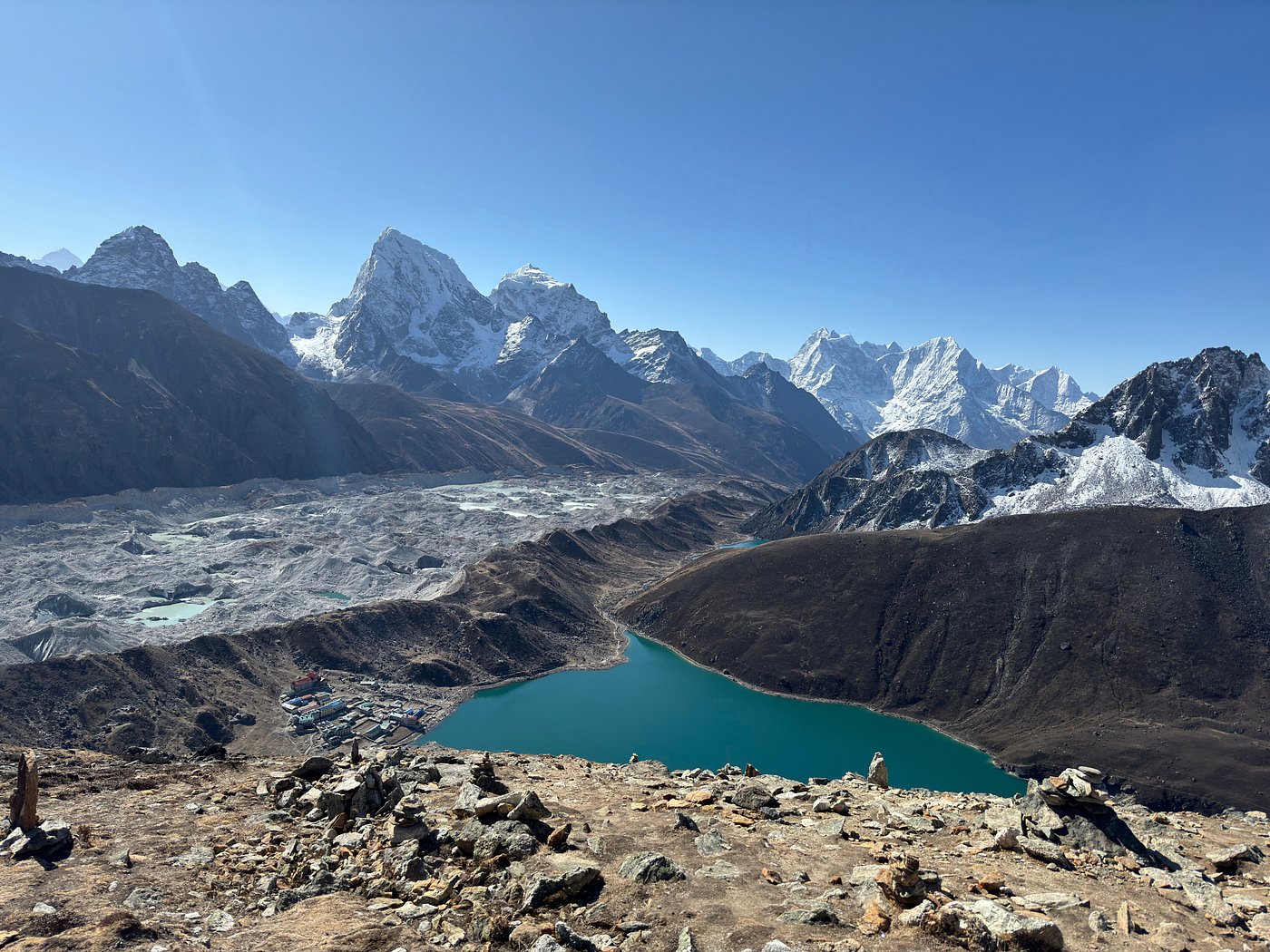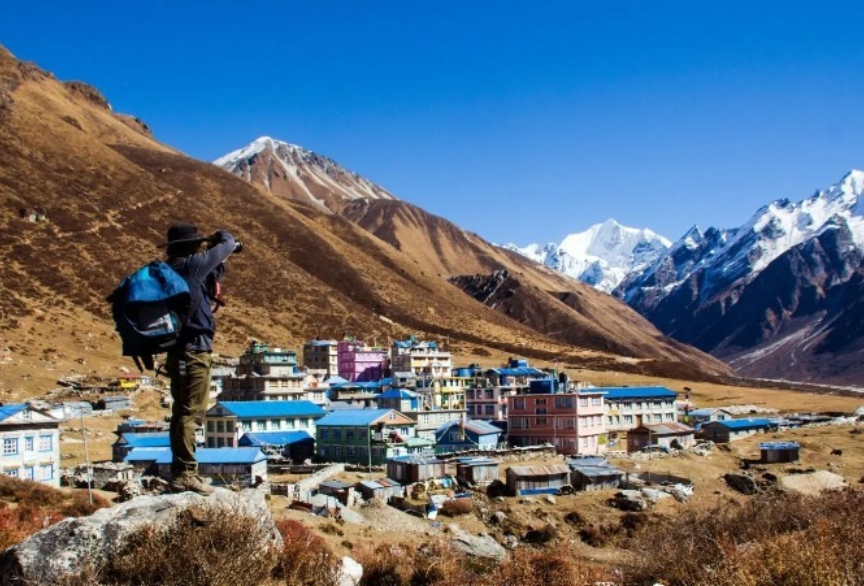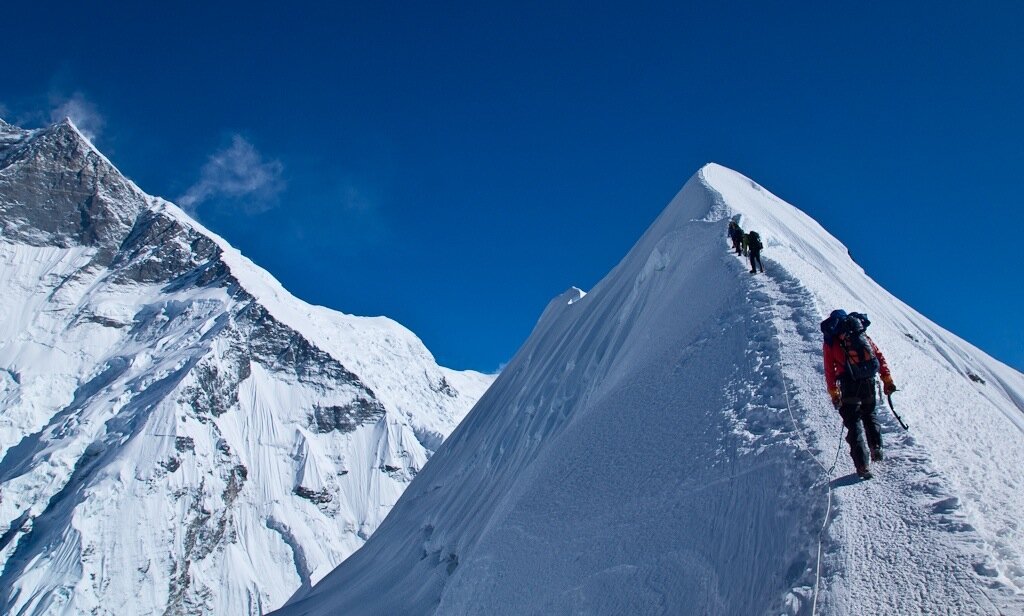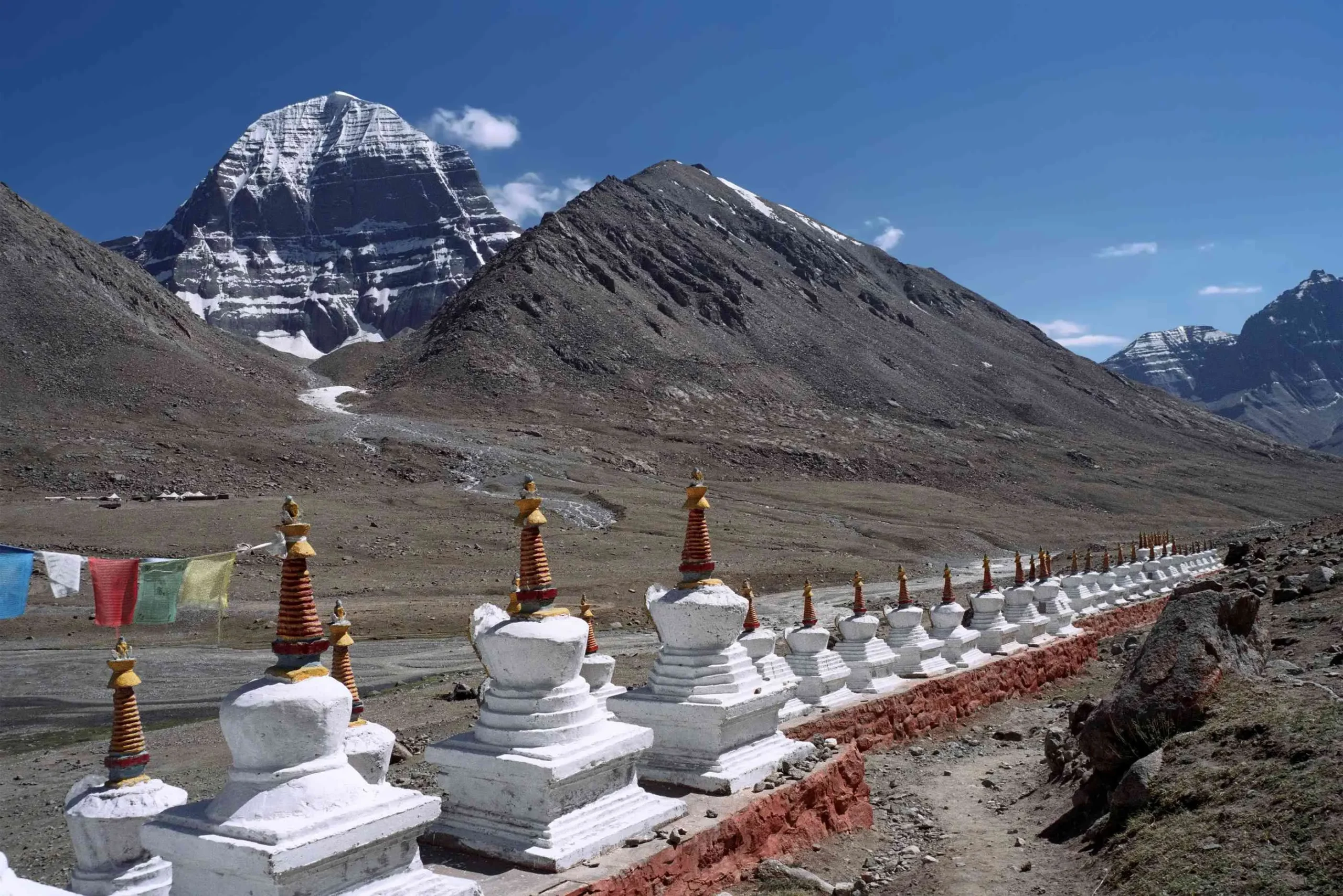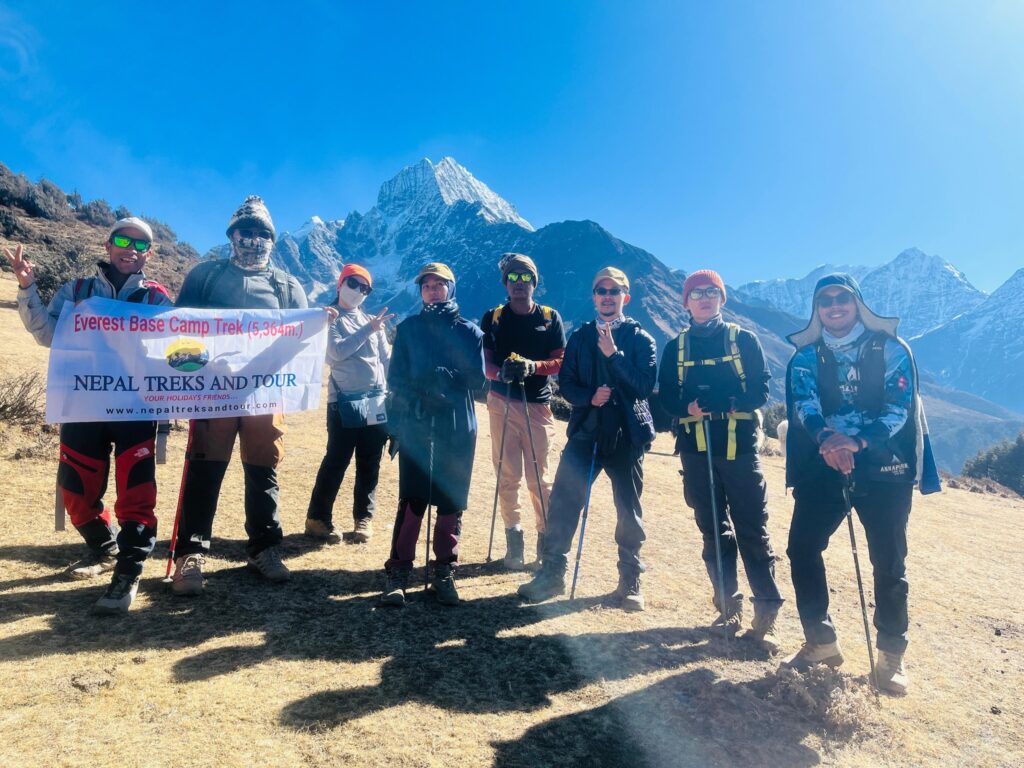Have you ever dreamed of standing face-to-face with the tallest mountain on Earth — Mount Everest? If yes, then the Everest Base Camp Trek (EBC Trek) should be on your bucket list for 2026. This Everest Base Camp Trek Itinerary & Cost for 2026 blog will help you understand everything — from the itinerary, cost, route details, permits, and daily plan, to real tips that make your trip smooth and unforgettable.
Let’s begin your journey to the top of the world!
What Is the Everest Base Camp Trek?
The Everest Base Camp Trek is one of the most beautiful adventures in Nepal. It takes you deep into the heart of the Himalayas, passing through Sherpa villages, Buddhist monasteries, and breathtaking mountain views. The final goal? To reach Everest Base Camp (5,364m) — the starting point for Everest climbers.
Everest Base Camp Trek Itinerary for 2026 (Standard 14 Days)
Here’s the most popular and safe itinerary for the Everest Base Camp Trek in 2026 — including acclimatization days and daily walking times.
Day Route Altitude (m) Walking Hours Highlights
| Day | Route | Altitude (m) | Walking Hours | Highlights |
|---|---|---|---|---|
| Day 1 | Fly to Lukla & Trek to Phakding | 2,610m | 3–4 hrs | Scenic flight & first Himalayan walk |
| Day 2 | Trek to Namche Bazaar | 3,440m | 6–7 hrs | Cross suspension bridges, Dudh Koshi River |
| Day 3 | Acclimatization Day in Namche Bazaar | 3,440m | 3 hrs (short hike) | Everest View Hotel, explore local market |
| Day 4 | Trek to Tengboche | 3,860m | 5–6 hrs | Tengboche Monastery & Ama Dablam views |
| Day 5 | Trek to Dingboche | 4,410m | 5–6 hrs | Breathtaking views of Everest and Lhotse |
| Day 6 | Acclimatization Day in Dingboche | 4,410m | 3 hrs (short hike) | Hike to Nangkartshang Hill |
| Day 7 | Trek to Lobuche | 4,910m | 5–6 hrs | Rocky trail with glacier views |
| Day 8 | Trek to Gorak Shep & Everest Base Camp | 5,364m | 7–8 hrs | Reach Everest Base Camp! |
| Day 9 | Hike to Kala Patthar & Trek to Pheriche | 5,545m | 6–7 hrs | Sunrise view of Everest |
| Day 10 | Trek to Namche Bazaar | 3,440m | 6–7 hrs | Descend through Tengboche |
| Day 11 | Trek to Lukla | 2,840m | 6–7 hrs | Final trek and celebration |
| Day 12 | Fly back to Kathmandu | 1,400m | 30 min | Scenic mountain flight |
| Day 13–14 | Buffer / Departure | — | — | Rest or sightseeing in Kathmandu |
Total Trekking Duration: 12–14 Days
Max Altitude: 5,545 meters (Kala Patthar)
Everest Base Camp Trek Cost for 2026
The cost of the EBC Trek depends on the type of package, comfort level, and season.
Below is a simple breakdown for 2026 prices:
| Type of Trek | Cost (Per Person) | Includes |
|---|---|---|
| Budget Trek | USD 1,200 – 1,400 | Guide, porter, permits, tea house stay |
| Standard Trek | USD 1,500 – 1,900 | Flights, meals, guide/porter, permits, lodges |
| Luxury Trek | USD 2,000 – 2,800 | Deluxe hotels, upgraded lodges, private services |
| Private Guided Trek | USD 2,500+ | Custom itinerary, personal guide, full flexibility |
Note: Prices vary based on group size, flight costs, and season (spring and autumn are busiest).
What’s Included in Most Packages
✅ Domestic flights (Kathmandu – Lukla – Kathmandu)
✅ Trekking permits (SAGARMATHA National Park & Khumbu Pasang Lhamu Permit)
✅ Licensed guide and porter
✅ Meals (Breakfast, Lunch, Dinner during the trek)
✅ Tea house accommodation
✅ First aid kit
✅ Airport transfers
What’s Not Included
❌ Nepal visa fee
❌ International flights
❌ Travel insurance
❌ Personal expenses (hot showers, charging, Wi-Fi, snacks)
❌ Tips for guide and porter
Route Overview – What to Expect Each Day
- Lukla to Namche: Lush forests, suspension bridges, and local villages.
- Namche to Dingboche: Rhododendron trails, monasteries, and yak caravans.
- Dingboche to Base Camp: Rocky paths and glacier views with high altitude.
- Return Trek: Easier descents through scenic valleys and Sherpa towns.
- Each day brings new views, challenges, and memories — from sunrise at Kala Patthar to prayer flags fluttering at Base Camp.
How to Prepare for the EBC Trek
- Start preparing 8–10 weeks before your trek:
- Walk or hike 5–10 km daily.
- Do stair climbs to strengthen your legs.
- Practice hiking with a small backpack.
- Stay hydrated and maintain a healthy diet.
- The trek is not about speed — it’s about steady pacing and endurance.
Best Time to Trek Everest Base Camp in 2026
The best trekking seasons are:
Spring (March–May): Clear skies, moderate temperatures, blooming flowers.
Autumn (September–November): Best mountain visibility, stable weather.
Avoid heavy monsoon (June–August) and freezing winter (December–February) unless you’re an experienced hiker.
Packing List for Everest Base Camp Trek
Here’s a quick must-have list for 2026 trekkers:
- Warm down jacket and thermal layers
- Waterproof hiking boots and socks
- Sleeping bag (-10°C rating)
- Trekking poles and headlamp
- Reusable water bottle
- Basic medicines and sunscreen
- Passport, insurance, and permits
Tip: Pack light. Porters usually carry up to 10–12 kg per person.
Do I Need Travel Insurance?
Yes! You must have travel insurance that covers high-altitude trekking (above 5,000m) and emergency helicopter evacuation. This is required by all reliable trekking agencies in Nepal.
Why Choose the EBC Trek in 2026?
Because 2026 is shaping up to be one of the best years for trekking in Nepal.
- Better local infrastructure
- Trained local guides
- Stable weather patterns
- Digital connectivity (Wi-Fi and mobile) improving even at higher altitudes
- Plus, after recent upgrades, Lukla flights and lodges are more reliable than ever.
The Everest Base Camp Trek is not just about reaching a point on a map — it’s about living a dream. Every step through those high mountain paths tells a story of courage, nature, and wonder.
Whether you choose a budget trek or a luxury journey, you’ll return home with something more valuable than photos — a lifetime memory.
FAQS
Is the Everest Base Camp Trek Difficult?
Yes, the Everest Base Camp Trek is moderately challenging — but not technical. You don’t need mountaineering skills, ropes, or climbing gear. However, it demands good fitness, mental stamina, and gradual acclimatization.
Can Beginners Do the Everest Base Camp Trek?
Absolutely — many first-time trekkers successfully complete the EBC Trek every year. You just need basic fitness, preparation, and the right mindset.
What Makes the EBC Trek Difficult?
The difficulty mainly comes from altitude, weather, and endurance rather than the technical nature of the path.
What Is the Highest Point of the Everest Base Camp Trek?
The highest point of the trek is Kala Patthar (5,545m) — an optional viewpoint near Gorak Shep offering panoramic views of Mount Everest (8,848.86m).
How Can I Prepare Physically for the Everest Base Camp Trek?
Start Cardio training training at least 8–10 weeks before your trek:
What Is the Best Season for a Comfortable EBC Trek?
The best times to trek to Everest Base Camp are:
Spring (March–May) — Warm weather, blooming rhododendrons, and clear skies.
Autumn (September–November) — Stable weather, crystal-clear mountain views.
Both seasons offer comfortable temperatures, minimal rainfall, and better acclimatization opportunities.
What Happens If I Get Altitude Sickness?
Altitude sickness (AMS) is the biggest concern for trekkers. Symptoms include headache, dizziness, nausea, or loss of appetite. To prevent AMS: Trek slowly — follow the “climb high, sleep low” principle. Stay hydrated and avoid alcohol. Take acclimatization days in Namche Bazaar and Dingboche. Consider Diamox (after medical consultation). If symptoms worsen, descend immediately — safety first.
How Long Does It Take to Complete the Everest Base Camp Trek?
The standard EBC Trek takes around 12 to 14 days, including 2 rest/acclimatization days.
How Much Does It Cost to Do the EBC Trek in 2026?
The cost varies depending on comfort level and services:
Budget Package: USD 1,200–1,500
Standard Package (Guide, Porter, Meals, Permits, Flights): USD 1,500–1,900
Luxury Lodge or Private Trek: USD 2,000–2,800
The package usually includes Kathmandu–Lukla-Kathmandu flights, TIMS and National Park permits, accommodation, meals, and guide/porter support.
How Cold Does It Get During the Trek?
Temperatures vary by season:
Spring/Autumn: Daytime 10°C–15°C; Nighttime -5°C to -10°C
Winter: Daytime 5°C; Nighttime -15°C or below
Layered clothing and proper down jackets are essential for warmth.
Is There Internet and Phone Connection on the Trek?
Yes, Wi-Fi is available in most lodges (for a small fee). Cellular networks like Ncell and NTC provide coverage up to Gorak Shep, though the connection can be unstable in higher areas. Many trekkers buy an Everest Link Wi-Fi card for reliable access.
Is a Guide Necessary for Everest Base Camp Trek?
While it’s technically possible to trek solo, hiring a licensed guide is highly recommended — and in 2024, the Nepal Government made guides mandatory for safety reasons.
How Hard Is the Descent After Reaching Everest Base Camp?
The return journey is easier but still requires endurance. Although it’s mostly downhill, it puts pressure on knees and joints — trekking poles help a lot. Most trekkers feel stronger on the way down after proper acclimatization.
Can I Do the Everest Base Camp Trek Without Prior Hiking Experience?
Yes — prior experience helps but is not mandatory. With a few months of physical preparation and a slow, steady pace, even first-timers can complete it successfully.
What’s the Success Rate of the Everest Base Camp Trek?
The EBC trek has an estimated success rate of 90–95% for guided groups. Trekkers who listen to their guides, follow acclimatization schedules, and stay hydrated rarely face major problems.
Is the EBC Trek Safe for Solo Female Travelers?
Yes, it’s safe and empowering for solo women. Nepal’s trekking community is friendly and respectful, and local agencies provide female guides or porters on request.
Book through a trusted trekking company for added safety and comfort.
Is There Any Age Limit for the Everest Base Camp Trek?
There’s no strict age limit — trekkers from 10 to 75 years have completed it successfully. However, older trekkers should do medical check-ups and consider private guided treks for flexible pacing.
What Are the Best Alternatives If I Find EBC Too Difficult?
If you prefer shorter or easier treks with Everest views, consider:
Everest View Trek (7 Days) – Scenic, low-altitude version
Gokyo Lake Trek – Slightly longer but less crowded
Pikey Peak Trek – Short, easy, and offers amazing Everest views


